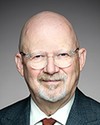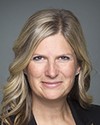Certainly. General Seymour will add some comments.
We went into Latvia, eyes wide open, certainly. As a lead nation, we felt it was our responsibility to understand this challenge; to make sure that we had a strong, strategic communications plan that was vetted amongst all of the capitals within our battle group, working that hand in glove with NATO to ensure that. Part of the challenge is to make sure you're getting your message out. In fact, leading up to our deployment, General Seymour and I, specifically, participated in a lead nation battle group war game, if you will, an exercise where we went through a number of examples of what may happen and how might we react to these sorts of occurrences—fake news, intrusions, disruptions from Russian hybrid tactics. I think we learned a lot from that. We came back to Canada. We ran a very similar exercise with our whole-of-government partners, the seniors from the various departments. I think the view that we took was that we need to be very connected; we need to be able to call a spade a spade when there are mistruths being made, certainly if they are directed at our Canadian Armed Forces deployed. We train them. We ensure, from a hygiene perspective, that there's a personal discipline.
General Seymour, who led the operational employment of that concept, can certainly share with the committee some additional comments if you want to grant us a bit more time.




